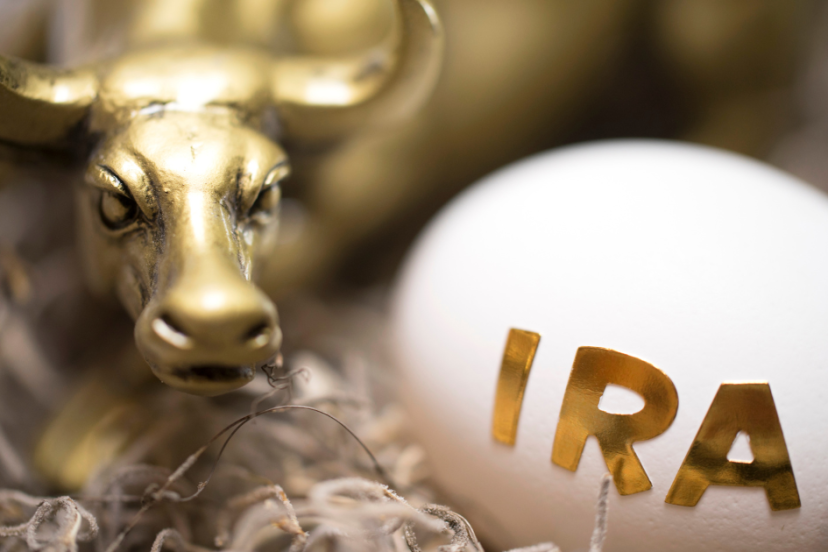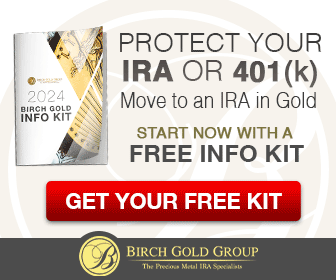Rolling Over IRA To Physical Gold: **Process of Converting Paper Assets to Gold**
As an enthusiast and scholar of Gold IRA retirement planning, I understand the significance of hedging one’s wealth against economic uncertainties by adding layers of diversification. Rolling over a portion of an IRA to physical gold has been a move made by wise investors seeking to achieve this goal. In this article, I will walk you through the process of converting paper assets to gold and highlight how this strategy can be used to add diversity to a retirement plan. Please note that this article is not intended to substitute for financial advice and you should speak with a financial advisor before making any investment decision.
**Introduction**
The world of investment has always had an interest in Gold IRAs for retirement planning. Gold, a timeless and precious metal, has long been considered a steady asset class during turbulent economic times. Converting a portion of paper assets to gold through a Gold IRA offers a unique opportunity to further diversify your investment portfolio and hedge against economic uncertainties.
**Understanding Paper Assets and Gold IRA**
Before delving into the process of conversion, let’s first understand what paper assets entail. Paper assets encompass a range of financial instruments such as stocks, bonds, mutual funds, and ETFs. While these investments can yield substantial returns, they are traditionally susceptible to market fluctuations and economic downturns. They are an essential part of a diverse retirement plan.
On the other hand, a Gold IRA is a self-directed Individual Retirement Account that allows you to invest in physical gold and other precious metals which have often been utilized by smart investors as a form of portfolio insurance because of their traditionally steady value.
**Reasons for Converting Paper Assets to Gold**
Hedge against Inflation and Economic Uncertainties
Gold has long been regarded as a hedge against inflation. Unlike paper currencies, which can lose value over time due to inflationary pressures, gold tends to retain its purchasing power. During times of economic uncertainty, when stock markets are volatile, gold tends to stay the course.
Diversify Investment Portfolio for Risk Management
Diversification is a key principle in investment. By allocating a portion of your portfolio to physical gold, you can mitigate risk and reduce the overall volatility of your investments. Gold’s performance typically shows a low correlation with that of traditional paper assets, providing a valuable diversification tool.
Long-Term Organic Store of Value
Gold has withstood the test of time as a store of value. Throughout history, it has maintained its worth and served as a way to pass down wealth across generations.
**Steps to Convert Paper Assets to Gold**
Converting paper assets to gold through a Gold IRA involves several essential steps. Let’s walk through the process:
Research and Choose a Reputable Gold IRA Custodian
The first step is to conduct thorough research on Gold IRA custodians. Look for reputable companies with a track record of excellence in customer service and reliable storage facilities. Verify their credentials and check for any complaints or red flags.
Set Up a Self-Directed IRA Account
Once you have selected a custodian, you will need to set up a self-directed IRA account. This type of account allows you to have more control over your investment choices, including the option to invest in physical gold.
Fund the Account and Choose the Desired Gold Products
Next, fund your self-directed IRA account. You can do this by transferring a portion of funds from your existing IRA or 401(k) account. Once your account is funded, work with your chosen custodian to select the type of physical gold products you wish to include in your portfolio.
Complete Necessary Paperwork and Transactions
Completing the paperwork for the conversion is a crucial step. It involves signing necessary documents and ensuring that the transfer of funds and purchase of gold are executed properly and in compliance with IRS regulations.
**Tax Implications and Regulations**
Before proceeding with the conversion, it’s essential to be aware of the tax implications and regulations surrounding Gold IRA investments. Gold IRAs offer potential tax benefits, but there are rules to follow to maintain the tax-deferred status of the account.
It’s recommended to consult with a qualified tax advisor or financial professional to understand the specific tax implications for your individual situation.
**Types of Gold Investments**
When converting paper assets to gold, you have various physical gold investment options. Let’s explore some of the common choices:
Gold Coins
Gold coins are a popular choice among investors due to their portability, divisibility, and aesthetic appeal. Some well-known gold coins include the American Gold Eagle, Canadian Maple Leaf, and South African Krugerrand.
Gold Bars
Gold bars, or gold bullion, come in various sizes and are available from different mints and refiners. They are an excellent option for investors seeking larger quantities of gold at lower premiums.
Gold ETFs and Gold Mining Stocks
For those who prefer indirect exposure to gold, Gold Exchange-Traded Funds (ETFs) and gold mining stocks are viable alternatives. ETFs track the price of gold and can be traded on stock exchanges, while gold mining stocks represent shares in gold mining companies.
**Selecting the Right Gold Dealer**
When purchasing physical gold, choosing the right gold dealer is paramount. Here are some tips to help you find a reputable dealer:
Reputation and Reviews
Look for dealers with a strong reputation and positive customer reviews. Check online platforms and forums to gauge the experiences of other investors.
Transparent Pricing
Choose a dealer that offers transparent pricing and discloses all fees and charges upfront. Avoid dealers with unclear pricing structures.
Secure Storage Options
If you plan to store your gold with the dealer, ensure that they offer secure and insured storage facilities.
**Storing and Protecting Physical Gold**
Once you have acquired physical gold, it’s essential to prioritize its safekeeping. You have two main options for storage:
Depositories
Professional depositories offer secure storage solutions for precious metals. These facilities are equipped with state-of-the-art security measures to protect your investment.
Home Safes
If you prefer to keep your gold close, investing in a high-quality home safe can be a viable option. Make sure the safe is fireproof and resistant to tampering.
**Attributes and Risks of Gold IRA**
Attributes
– **Longstanding Store of Value:** Gold’s historical status as a store of value can hedge retirement savings from inflation.
– **Diversification:** Gold’s low correlation with other assets can reduce overall portfolio risk.
– **Tax Advantages:** Gold IRAs offer potential tax benefits, depending on your individual financial situation.
Risks
– **Price Volatility:** Like any investment, the price of gold can be volatile in the short term.
– **Market Timing:** The right time to invest in gold may vary based on market conditions.
**Economic Outlook and Gold Investment**
The performance of gold is closely tied to the overall economic climate. In times of economic uncertainty or geopolitical tensions, gold has tended to maintain steady value. On the other hand, during periods of economic stability and bullish markets, gold’s appeal may wane leading to volatility.
Understanding the broader economic outlook can help investors make informed decisions about when and how much to allocate to gold.
**Common Mistakes to Avoid**
Lack of Research
Not conducting thorough research on Gold IRA custodians and dealers can lead to fraudulent schemes or subpar service.
Over-committing to Gold
While gold can be a great addition to a diversified portfolio, over-committing to a single asset class can be risky. You should always work with a trusted financial advisor to determine whether to invest in gold and, if so, how much portfolio exposure you should have with gold.
Ignoring Storage and Security
Neglecting the safe storage of physical gold can expose your investment to theft or damage.
**Diversification with Precious Metals**
While gold has been a popular choice for portfolio diversification among smart investors throughout history, it’s worth considering other precious metals as well. Silver, platinum, and palladium are viable options that can offer unique attributes and diversification advantages.
Each metal has its own market dynamics and industrial applications, which can impact their price movements differently from gold.
**Rolling Over vs. Transferring IRA**
When moving funds from a traditional IRA to a Gold IRA, you have two options: rolling over or transferring the funds. The main difference between the two lies in the timing and tax implications.
Rolling Over
A rollover involves withdrawing funds from your existing IRA and then depositing them into a Gold IRA within 60 days. If executed correctly, the funds remain tax-free.
Transferring
A transfer, on the other hand, involves directly moving funds from one IRA custodian to another. This method eliminates the risk of potential tax consequences and is generally the more straightforward option.
**Retirement Planning with Gold IRA**
Incorporating gold into a diverse retirement has long been a strategy utilized by smart investors, but those same investors also understand it should be part of a comprehensive retirement planning approach. Diversification across various asset classes and regular portfolio reviews are crucial to maintaining a balanced retirement portfolio.
Consider consulting with a financial advisor to tailor a retirement plan that aligns with your financial goals, risk tolerance, and time horizon.
**Conclusion**
Converting a portion of paper assets to gold through a Gold IRA offers a powerful means of diversifying your investment portfolio. As you embark on this journey, remember the importance of diligent research, secure storage, and adherence to IRS regulations.
By holding physical gold, you can hedge against economic uncertainties with a unique and cherished asset. However, like any investment decision, it requires careful consideration and planning, and may be subject to losses with the wrong strategy.
As a Gold IRA enthusiast, I encourage you to explore the possibilities of including gold in your retirement plan. Consult with financial professionals, make informed choices, and pave the way toward your retirement goals.
**FAQs**
- **What is a Gold IRA, and how does it differ from a traditional IRA?**
A Gold IRA is a self-directed Individual Retirement Account that allows investors to hold physical gold and other precious metals. Unlike a traditional IRA, which typically limits investment options to paper assets, a Gold IRA expands the scope to include tangible assets like gold.
- **Is gold a safe investment for retirement planning?**
Gold has been considered a steady asset due to its historical ability to hedge against economic downturns. Including gold in your retirement plan can provide a measure of diversification against market volatility.
- **What are the tax advantages of a Gold IRA?**
Gold IRAs can offer potential tax benefits, depending on your financial situation and the type of IRA account you choose. Gains on gold investments held within a Gold IRA are generally tax-deferred until distribution.
- **Can I convert my existing IRA into a Gold IRA at any time?**
Yes, you can convert your existing IRA into a Gold IRA at any time. However, it’s essential to be aware of the IRS rules and regulations governing such conversions to ensure compliance.
- **How do I choose a reputable Gold IRA custodian?**
Selecting a reputable Gold IRA custodian is crucial to the success of your investment. Look for custodians with a strong track record, positive customer reviews, and transparent fee structures. Conduct thorough research and seek recommendations from financial experts if needed.









